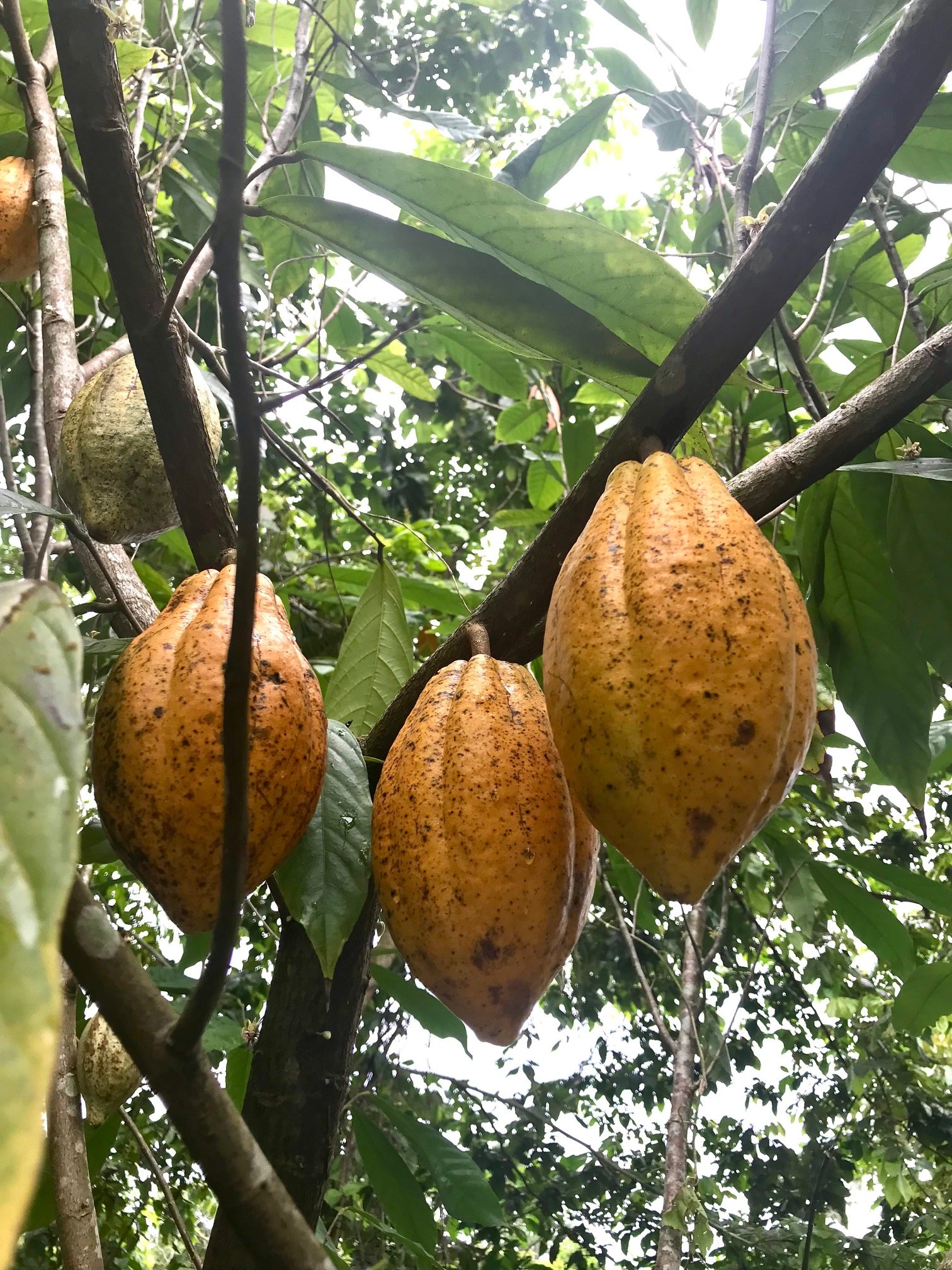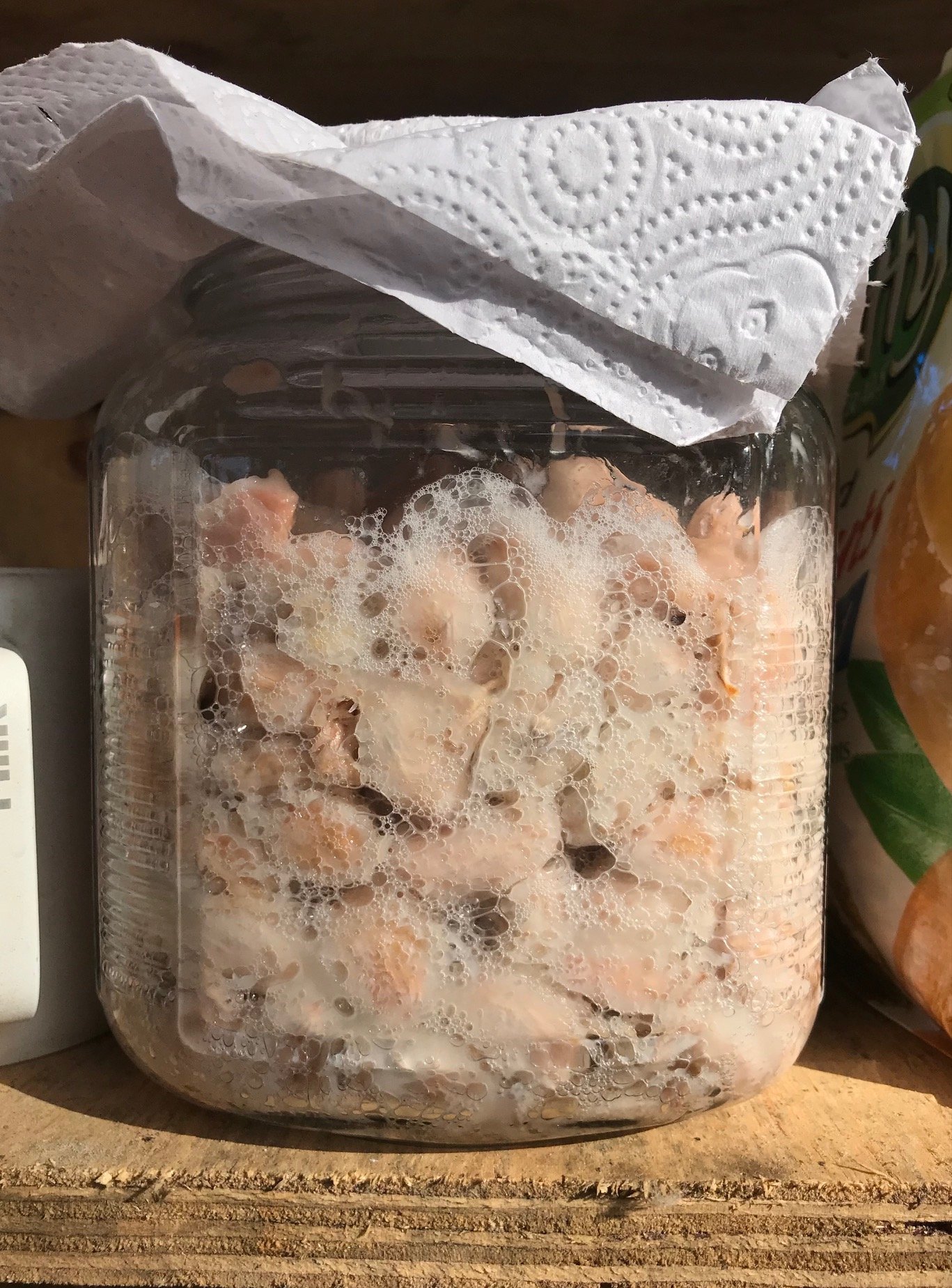Swiping Chocolate, How the world was divided to bring us candy.
Cacao sun-drying on Bueno Compartir farm.
The chocolate theft began with a bunch of lost European sailors. We’ve heard the story plenty times before. These lost sailors, bankrolled by powerful oligarchs and officials of other nations, encountered indigenous nations in a part of the world they did not know existed a few years earlier. But most importantly, it was a part of the world where none of their police, judges, or juries could see them. As far as their society was concerned; they were on a different planet, a New World. Compounded by the fact that they were squandering other peoples’ money, they felt entitled, and also desperate, to come back with something. On this New World, they did whatever they wanted, experimenting with the worst crimes imaginable in order to return to the Old World with riches of any kind - minerals, food, artifacts, people. It is precisely the separation between worlds, the creation of a “new world”, that justified the crimes. The surviving accounts from crew members and witnesses are gut wrenching and do not easily leave the conscience. I can never erase from my mind the illustration of a medieval torture device these Europeans used which at once included ropes, dogs, and fire. The near complete extermination of tens of millions of people came swiftly. It was during the process of exterminating the Maya that Europeans first tasted cacao, the food that was so important to them it flowed densely through society, feeding spiritual ceremonies and paying military salaries.
Settler colonialism as an economic strategy (and self-assigned destiny) requires theft, facilitated by genocide, to acquire lands, and subsequently demands theft of human labor, underpaid or unpaid, facilitated by the dismantling of societies, to make the lands profitable. The thefts of lands, lives, and labor across the Americas, and every Atlantic and Pacific island they charted can be considered the original robberies of European colonization. We know these robberies intimately, the legacies of the thieves surround us, their names and images immortalized in the very understanding of how the world came to be.
The loot, literally enough to build nations, funded and supplied the Industrial Revolution of the “developed” countries, which eventually pushed capitalism beyond slavery. The cornerstone of the European chattel slave system, white supremacy, is a logic principally driven by fear. The constant fear of African revolt, especially after Haiti fucked up their whole system, was at odds with European capitalist growth. Guyanese historian Dr. Walter Rodney explains that, “people can be forced to perform simple manual labor, but very little else. This was proven when Africans were used as slaves in the West Indies and America. Slaves damaged tools and carried out sabotage, which could only be controlled by extra supervision and by keeping tools and productive processes very elementary. Slave labor was unsuitable for carrying out industrial activity, so that in the U.S.A. the North went to war in 1861 to end slavery in the South. So as to spread true capitalist relations throughout the land.” Rodney’s classic “How Europe Underdeveloped Africa” has been pivotal in changing the narrative of European saviorism and challenges the very notion that the developed world became so by chance or destiny.
By the late 1800s, Europe and America had banned small business slavers from the slave trading economy and called it abolition. They preserved slavery in the form it still exists in today: of forced prison labor on projects of the state, on massive plantations, and in the production stages of supply chains, in poor countries. Instead of stealing people from the West African coast, they used the fruits of the original robbery, namely industrialized weapons, to turn their exploits towards the interior of Africa. A profit rush ensued in 1881, a desperate “Scramble” of Europeans racing to conquer and claim every African acre as European owned. White men gathered for three months in Berlin to organize the robbery. The continent was arbitrarily divided and arranged, and the people of many nations forced to live, and die, under one foreign flag, toiling in mines or monocultures for foreign profits. In just thirty three years the conquer of eleven million square miles was complete. This was the second robbery. Today’s biggest chocolate sellers first started selling the stuff during this robbery - Hershey (1894), Cadbury (1897), Nestle (1904), Tolberone (1908), Mars (1911).
The third robbery is no less awful than the first two, but it’s more revealing of the relationship Europe and the U.S. wanted to establish with the world. Colonies, already robbed clean of their people, resources, and freedom, were to be continually robbed through the process of underdevelopment. Through educational, economic, political, and industrial deprivation and force, what amounts to torture slowed down and spread out over generations, Europe and the U.S. could destroy the rest of the world to such an extent that they would agree to work for pennies. An international division of labor was created between the deadly manual labor in the colonies and the relatively higher paid factory and skilled labor in Europe, and it ensured sustainable plunder. Dr. Rodney explains that colonialism, by its nature, was against the establishment of industries in Africa and Latin America, outside of agriculture and the extractive industries of mining and lumber. It is why Mexican chocolate is characteristically coarse, unlike Swiss or German chocolate which is industrially smooth. Whenever Africans pushed towards industrialization, they were deliberately blocked by the colonial governments acting on behalf of European business. “Ground-nut oil mills we set up in Senegal in 1927 and began exports to France. They were soon placed under restrictions because of protests of oil-millers in France. Similarly in Nigeria, the oil mills set up by the Lebanese were discouraged. The oil was still sent to Europe as a raw material for industry, but European industrialists did not then welcome even the simple stage of processing groundnuts into oil on African soil.” As a result of the non-industrialization policy, Sudanese and Ugandans grew cotton but imported manufactured cotton goods, and Ivory Coast grew cacao for which they were paid nothing and imported chocolate too luxurious to afford. The lives of many a colonial subject were spent harvesting and extracting resources from their own lands to pad foreign bank accounts. Beginning in the Second World War and continuing for years after, Britain repaid wartime loans received from the U.S. in tin, rubber, and cacao shipped directly from their colonies in Africa. Cacao farmers were forced to trade the fruits of their labor for weapons of their subjugation. In 1947 alone, west African cocoa made Britain over 100 million dollars, essentially none of it returning to Africans.
In between colonizer and colony, running the logistics of the robbery we find marketing boards and trading companies. They obfuscated the connection between the poor chocolate workers that struck in Hershey’s Pennsylvania factory town in 1937 and the poor cacao farmers that struck across all of Ghana months later. The cacao farmer’s holdup gained nationwide momentum and was able to sustain for months, fucking up the global chocolate trade. In response, the cacao buyers changed the rules of the game and took tighter control of the trade. The European Marketing Board was created to cut out the African brokers that dealt between African farmers and European trading companies. The first head of the British Cocoa Marketing Board was none other than John Cadbury, director of Cadbury Brothers. It sold to the British Ministry of Food at incredibly low prices, in exchange for military protection of the robbery, and the Ministry in turn sold to British manufacturers, making profits as high as 11 million pounds in some years. The Board also sold loot to the U.S., the largest market, where prices were very high. None of the profits went back to the African farmer, but instead represented British foreign exchange in American dollars.
The current politically correct term is global north and global south, seemingly acknowledging a shared globe, yet the searing separation of the binary remains. It hides behind a false generalization of geography which continues to imply distant and separate worlds, when the fact remains Israelis of the Global North pass by their Apartheid Wall on a daily basis in order to invade, evict, and kill Palestinians of the Global South.
What can I say about decolonization that Frantz Fanon has not already said over half a century ago? He has already asked Europeans to wake up and stop playing the game of Sleeping Beauty. It is an insult to pretend that the injustices of the world could ever be leveled by new capitalism when the rich still get rich off the poor. The majority of the world is not deserving of crumbs so that the minority may savor guilt free chocolate. To think otherwise is a settler pathology. There is no third world, and if there is it’s because the first world created it, which means that the first world needs it. The destiny of the universe depends on the first world asking why they need it. Why they do they feel like they deserve it, and insist that it exists?
This blog post was made available courtesy of the author, Steven Casanova. It is part of the article “Swiping Chocolate, by the bag full.” To read the entire article, see all the photos and footnotes, go to StevenCasanova.substack.com



